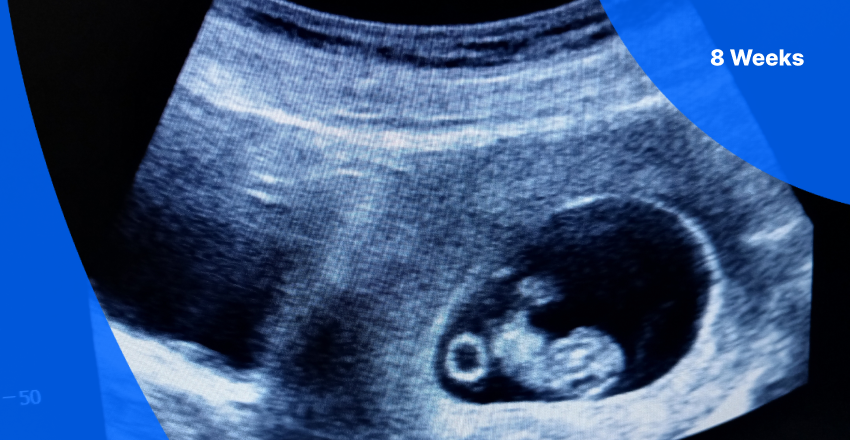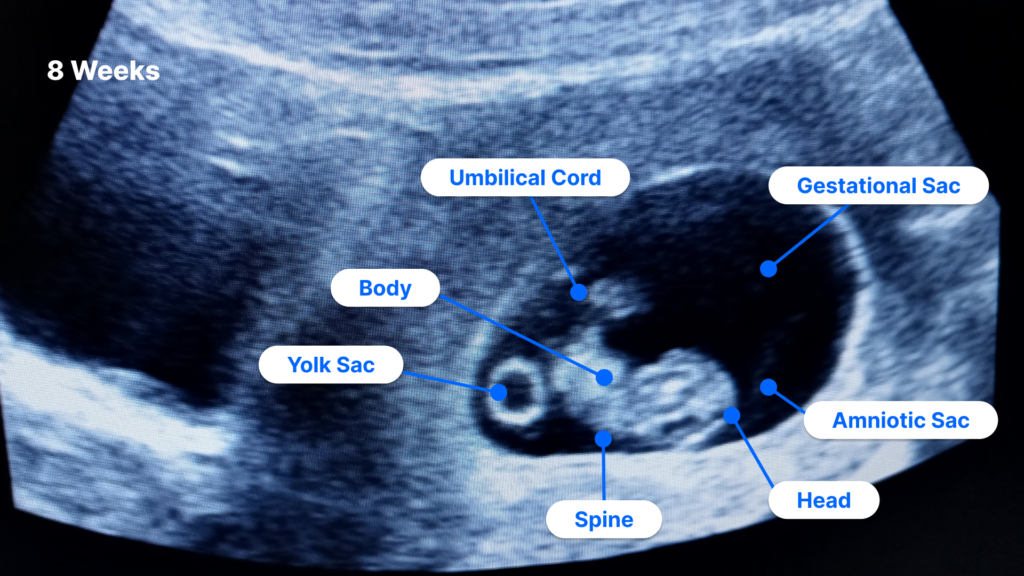Preparing for an MRI: What to Wear, What to Avoid and Other Tips
July 25, 2024
Read More
If you’ve had a positive pregnancy test, you may be dealing with a range of emotions in addition to some potential physical pregnancy symptoms. This early along in your pregnancy journey, it’s normal to feel apprehensive about all the unknowns ahead, especially when it comes to medical scans like ultrasounds.
Ultrasounds are an important part of your pregnancy journey because they help you and your practitioner monitor your baby’s health and development. Around the 8-week mark, your family doctor may order an ultrasound to confirm dating and pregnancy viability. Dating is an important anchor to get right early on as all other tests and scans in your pregnancy are dependent on this date.
In this article, you’ll learn:
This prenatal ultrasound is often the first chance you and your healthcare practitioner will have to visually confirm your pregnancy. The results of this early pregnancy ultrasound give you and your doctor the most accurate estimated due date to refer to going forward. Your practitioner will likely order an ultrasound around the 8-week mark to:
On the contrary, 8 weeks is often the first point at which your healthcare professional will order an ultrasound—so they can confirm dating and that your pregnancy is viable. Having an ultrasound at 8 weeks pregnant will give you and your practitioner a baseline date from which to measure your progress.
During your ultrasound appointment, a trained technician called a sonographer will use a hand-held device called a transducer to create and capture sound waves. Too high pitched for human ears to hear, those sound waves travel through your body and bounce off different structures in different ways. The ultrasound machine detects and uses these signals to create an image of the position and shape of your growing pregnancy.
Ultrasounds are very safe and should be performed by trained technicians. The sound waves are painless and don’t produce ionizing radiation (like X-rays or CT scans). Both Health Canada and the U.S. Food & Drug Association consider ultrasounds low-risk procedures.
There are two main types of pregnancy ultrasound. With a transabdominal ultrasound, the sonographer will squeeze gel onto your belly and then run the transducer over the surface of your skin. In a transvaginal ultrasound, the lubricated wand is inserted into your vagina, which is closer to your uterus and ovaries and allows for a closer look at your pregnancy.
At 8 weeks, you’ll have both a transabdominal and transvaginal ultrasound. In the early stages of pregnancy, the embryo is so small that the transducer successfully captures more details inside the vaginal canal than it can outside the abdomen.
Ultrasounds aren’t complicated scans, but there are some things you can do to help prepare, such as:
At your 8 weeks ultrasound, you and your healthcare team will gain valuable information about how your pregnancy is progressing. Your embryo will be roughly the size of a bean, around 1.5-2.5 cm or 0.5-1 inch long. During your ultrasound you may be able to see the following:

Transabdominal pelvic ultrasound image at 8 weeks pregnant
You won’t see too much fine detail in your 8 weeks ultrasound. For instance, you’re not likely to see limbs, nor will you be able to discern the sex of your baby. Those opportunities will come with further ultrasounds later on in your pregnancy or if you’ve opted for additional screening.
Your 8 weeks pregnant ultrasound may be the first time you see or hear a fetal heartbeat. However, there are also occasional reasons you might not. If you incorrectly estimated the date of conception, it may still be too early to detect a heartbeat. Also, during a transabdominal ultrasound, the embryo’s heart may still be too small to see the heartbeat fluttering.
You can ask the sonographer questions about the ultrasound procedure itself, like:
The sonographer is often not allowed to answer questions about what your ultrasound contains. The sonographer then prepares the image report, which is reviewed by a radiologist or certain obstetricians (OBs). The radiologist then produces a report for your referring physician, OB or midwife, who will go over the results with you in a follow-up appointment.
Some questions you can ask at your follow-up appointment include:
Many patients want to see the results of their 8 weeks ultrasound as fast as possible. With PocketHealth, you can instantly access and share your pregnancy ultrasound images and report, as soon as the report and images are released by the imaging facility (some release immediately). That means you typically have access before your follow-up appointment with your practitioner.
PocketHealth allows you to securely access, share and store your images and health information in one place. Plus, you can easily share ultrasound images with friends and family, so they can see how your pregnancy develops.
If you need clarity on the terms in your ultrasound report, PocketHealth’s Report Reader can help. Report Reader can help you understand the results of your 8 weeks pregnant ultrasound, so you feel confident and prepared when talking to your pregnancy care practitioner.
An ultrasound at 8 weeks will confirm your pregnancy, measure the size of your embryo and give you an estimated due date. And you’ll get images, most likely for the very first time!
You and your doctor can now make confident decisions about your pregnancy with accurate knowledge of dates. You’ll also be able to look ahead to the next scans in your pregnancy journey, including the:
Knowing what to expect at your 8 week ultrasound and beyond will help you feel more comfortable and empowered, so you can happily anticipate the next stage of your pregnancy.
Learn more about how to use PocketHealth to access and share your pregnancy ultrasound records.
Medical content review provided by Ben Fine, MD. Any health-related information contained in this post is intended to provide general education only and is not medical advice. This should not be used as a substitute for the advice you receive from your healthcare provider.